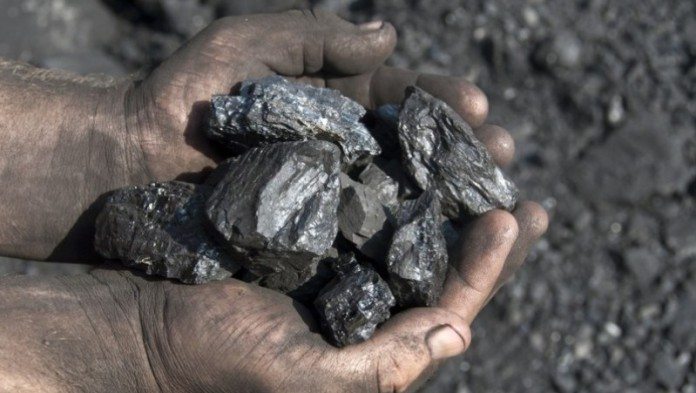
THUNGELA Resources last week produced strong interim numbers underpinning the performance of its share price since listing in Johannesburg in June: an improvement in three months of 121%.
Yet a recent UN-backed report on climate change warning it was spiralling out of control intensifies the debate in South Africa as to whether its thermal coal industry has a growth trajectory, bullish global demand forecasts notwithstanding.
If there’s no growth, the alternative is the prospect of companies eking out what’s left of remaining coal reserves that can be accessed through low-risk, low-cost brownfields development.
That’s partly the way Seriti Resources sees it. “These assets will never be built again because there isn’t the funding to do it,” says Doug Gain, CFO of Seriti Resources.
“So I guess the trick is how do you take these bases of assets, with excellent infrastructure, that have run successfully through many cycles, but which have become more marginal over time?”
Seriti Resources is an unlisted company founded on the purchase of Anglo American’s domestic coal mines from Anglo Coal in 2018. Earlier this year, it expanded its production base, buying South32’s 92%-owned business, South African Energy Coal (SAEC). It wasn’t an easy deal to conclude: an unprofitable contract between SAEC and Eskom’s Duvha power station threatened to unravel the transaction.
In a process that was as political as it was economic, a break-even coal supply agreement (CSA) was eventually settled between SAEC and Eskom, presided over by the South African National Treasury. Eskom agreed on a doubling in the contract price, but it also won the option of putting the CSA out to public tender in 2024, 10 years earlier than the original CSA signed by SAEC had allowed.
Gain declines to say, but the likelihood is Seriti’s coal will always be the cheapest for Duvha. That’s because Seriti’s Ifalethu mine – a section of the Wolvekrans Middelburg Complex (WMC) housed in SAEC – is the closest to the power station.
Nonetheless, the introduction of third-party competition in less than four years is a threat to Seriti, and it’s increasingly thinking it may have to repurpose Ifalethu coal, possibly selling it on the export market.
Exports back on the menu?
Exports can be a good, even a great, business when the thermal coal price is high, but damagingly loss-making when the price wanes. This is especially so for WMC when the seaborne price trades below $80/t. Seriti is hoping it can work some operational wonders at WMC in terms of plans to mothball and re-engineer parts of the complex.
The point is that a reassessment of what constitutes marketable export tons versus domestic production is broadly underway in South Africa’s coal sector. In the past, coal mining firms understood their reserves in terms of higher-quality export coal, coal that South African power utility Eskom burnt; and then a mid-range product that was supplied to industrial buyers, such as cement manufacturers, in the domestic market.
Today, however, the market is fluid and coal products are blended with greater skill. In a similar vein, Seriti may have to identify and capture export markets for its New Largo mine, initially a project bought from Anglo American in 2018 for R850m.
Seriti bought the New Largo mine expressly for Eskom’s Kusile, the 4,800MW power station. The deposit is close to Kusile but its development was never a certainty, not while its previous owner, Anglo American, held the property. In the absence of its development, Eskom procured coal from junior mining firms.
Some of this alternative coal is from mines 50 to 60 kilometres away, which makes it costly and, from a business perspective, illogical. Some sources say there’s no good reason for this: quite possibly it is the procurement practices of previously corrupt Eskom management in support of the trucking agenda.
In any event, Seriti may be forced to find export markets for New Largo coal. At least, though, it will help fill Seriti’s entitlement to export facilities through Richards Bay Coal Terminal (RBCT), situated in KwaZulu-Natal. Originally scoped for well over 100Mt capacity, the terminal has never approached that level and is currently operating well below the 70Mt mean of the last few years.
However, plans by Transnet, the government-owned logistics firm, to expand its railing systems in Limpopo province to increase coal exports and fill RBCT look like a pipe dream.
That’s the negative impact of a slowing coal sector: it hurts economies built upon its success. The failure of Resource Generation, a Johannesburg-listed coal development firm, to finance its Boikarabelo mine in Limpopo province, is a case in point. Its development was supposed to help give wings to the government’s Limpopo Corridor industrial programme. Rail expansions anticipating a surge in Limpopo province coal development look unlikely.
“There’s been talk of the Overvaal tunnel doubling [a rail route in Mpumalanga province operated by Transnet Freight Rail], but I don’t think it’s going to happen. We think realistically, coal could shrink over the medium term,” says Gain.
For the full story as it appeared in our 2021 Mining Yearbook, please visit the special ebook section below.













